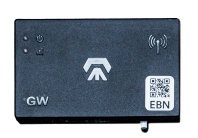





Place the aggregator inside the machine’s power panel (or outside panel if using an external sensor).

If an existing aggregator is installed: Connect the new aggregator via CAT5 cable to the existing device's second CAT5 jack.
If there is no existing device: Connect the aggregator to the gateway via CAT5 cable using either jack.

Check for a solid blue LED light in the lower left corner of the digital aggregator.
This indicates power and successful gateway connection.

First you must identify which signal you will be working with. Then, you’ll locate that signal in your machine’s power panel and identify the nearest power outputs.
It’s critical to choose a signal that changes back and forth exactly once per cycle.




Once you submit your machine configuration info, our team will begin tuning your machines and setting up your dashboard. This typically takes 1 week for pilots and 14-21 days for larger full deployments.